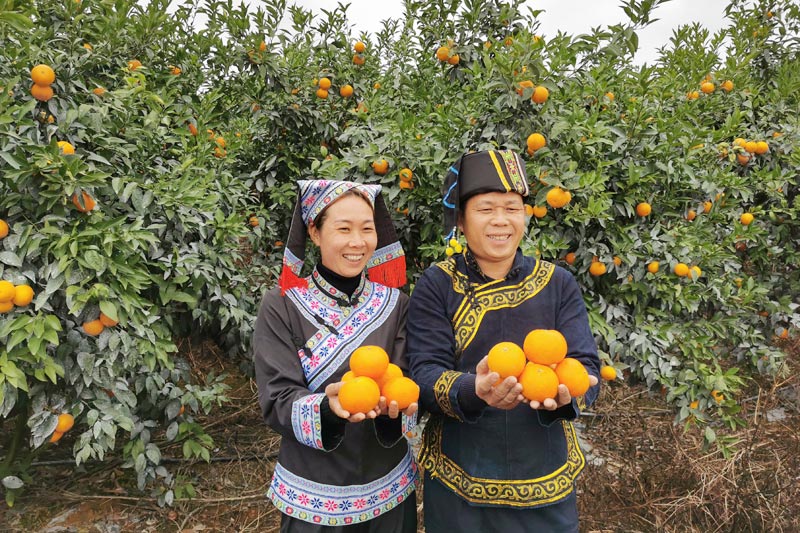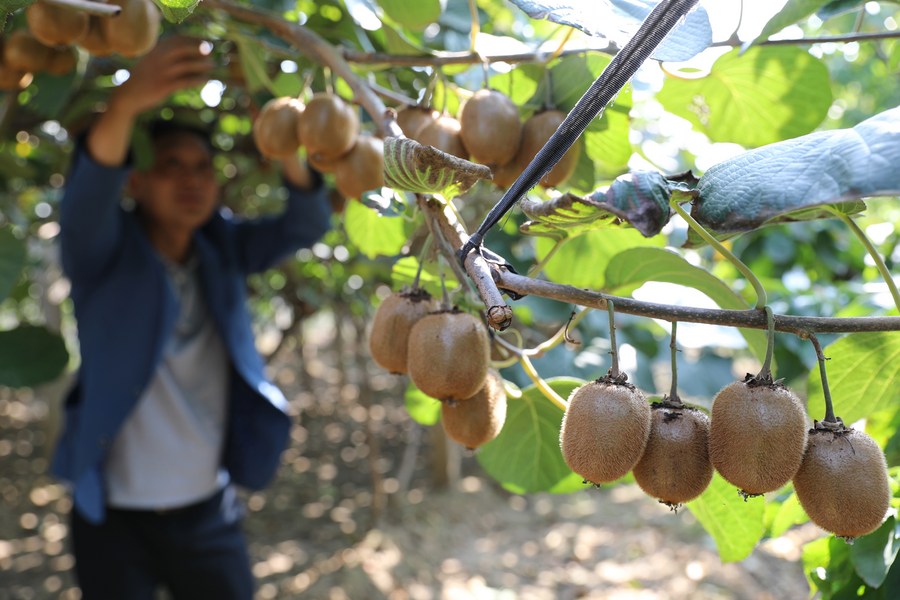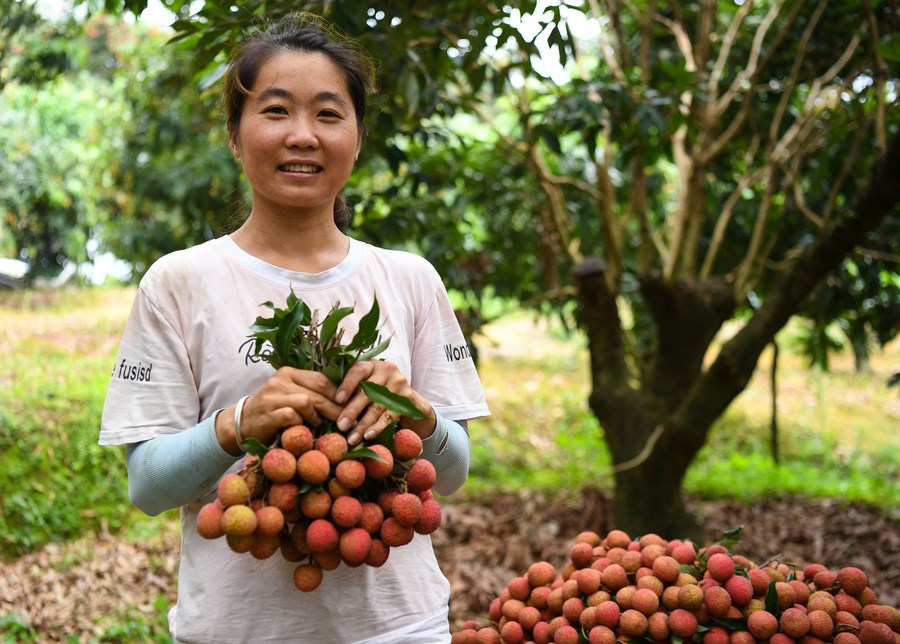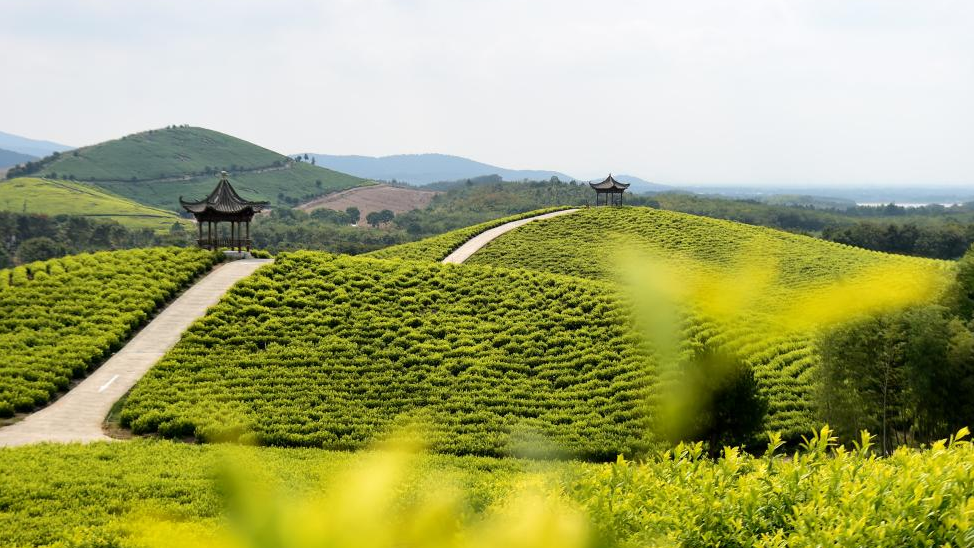China leads world in fruit production
China ranks first in the world in fruit production, and Chinese people's average daily consumption of fruits now exceeds 500 grams, thanks to the painstaking efforts of the country's fruit tree breeding experts, the new media account of the provincial radio and television bureau of central China's Hubei Province reported.

Local farmers show citrus fruits in an orchard in the city of Chongzuo, Guangxi Zhuang Autonomous Region. (Photo/Yang Zhenhua)
Among the great variety of fruits in China, citrus fruits are one of those most commonly seen on the plates of Chinese people. Citrus trees in China bear fruit in all seasons, allowing Chinese citrus growers to earn an income and Chinese people to enjoy citrus fruits all year round. This wouldn't have been possible if experts hadn't lengthened the fruit bearing period of citrus trees from four months to 11 months.
Deng Xiuxin, deputy head of the Chinese Academy of Engineering (CAE), is one of the experts who have contributed significantly to this achievement.
In order to make sure people can enjoy citrus fruits in all seasons, Deng, who is referred to as a “citrus academician" in China, has led his team in working tirelessly to extend the fruit bearing period of citrus trees. Deng and his team have planted citrus trees whose fruit ripen at different times in citrus orchards across the country according to local climates, forming a belt of late-maturing citrus trees that stretches 600 kilometers from Zigui county, Yichang city of Hubei to Wanzhou district in southwest China's Chongqing municipality.
In addition, Deng's team has also found a new variety of citrus trees in Zigui county, the brown orange, whose greatest advantage is that its fruit ripens about two months later than those of ordinary sweet orange trees.
The kiwi fruit, another fruit commonly seen on the tables of Chinese families, has also witnessed unremitting efforts from many Chinese fruit tree breeding researchers.

File photo taken on September 29, 2019 shows a villager picking kiwi fruits in Meixian County, northwest China's Shaanxi Province. (Xinhua/Du Honggang)
Although the kiwi fruit is native to China, its first artificially planted variety was developed in New Zealand; and kiwi fruit from New Zealand has long dominated China's kiwi fruit market.
In 2006, fruit tree experts in China took the country's second national survey and collection of crop germplasm resources as an opportunity to develop China's own improved varieties of kiwi fruit, and started to select high-quality germplasm resources from wild kiwi fruit trees.
Li Zuozhou, an associate research fellow with the Wuhan Botanical Garden under the Chinese Academy of Sciences (CAS), and his team have gone to countless mountains in search of kiwi fruit germplasm resources, sending fresh samples of wild kiwi fruit to the country's national kiwi fruit germplasm nursery as soon as they were collected.
As of August 2022, China had built 24 national-level germplasm nurseries for fruits. Using these nurseries’ germplasm resources, researchers have developed more than 100 new fruit varieties, and made wild fruits that could previously only be found in deep mountains more delicious.

File photo taken on May 20, 2020 shows a farmer exhibiting the lychee that she just picked in the field in Guangdong Province, China. (Xinhua/Deng Hua)
It used to be difficult for consumers in the central and northern regions of China to enjoy lychee, a popular fruit that spoils more easily than many other fruits.
Because of the rapid development of the country's cold chain logistics sector, expressway and railway networks, as well as policies and measures rolled out by the Chinese government to facilitate the transportation of fruits, various fruits including lychee can now be found in markets around the country.
Maoming city in south China's Guangdong Province, the largest lychee-producing area in the world, accounts for around one fifth of the world's total lychee production.
With cold storage facilities built in the fields, lychee growers in Maoming can immediately start such links as sorting, packaging, precooling, and refrigerating after picking the fruit, and then have fresh lychee transported to more than 30 provincial-level regions across the country for sale.
It's believed that China's rich variety of fruits not only delights Chinese people’s taste buds, but has also enhanced their confidence in the country and brought them a sense of security.
Photos
Related Stories
- Fresh Vietnamese durians imported to China
- More fruits will be exported to China: S. African growers association
- A look at local fruit market in Haikou, Hainan
- A peek into tropical fruit tree planting base in Hainan, south China
- Foreign fruit vendors see opportunity as produce prices soar in China
- China’s soaring demand for fruit benefits foreign fruit farmers
- Qiannan looks to fruit to boost economy
- Fruit farmers in S China expecting increased income
- Enjoy fruit feast in Rio!
- College canteen serves fruit dishes to students
Copyright © 2022 People's Daily Online. All Rights Reserved.









